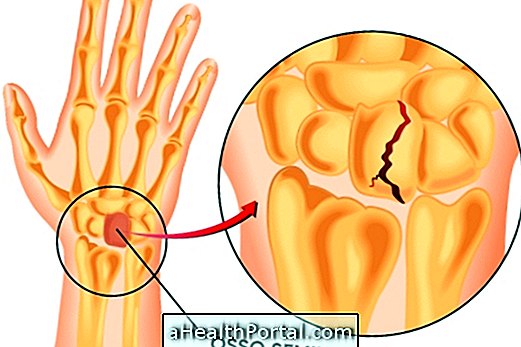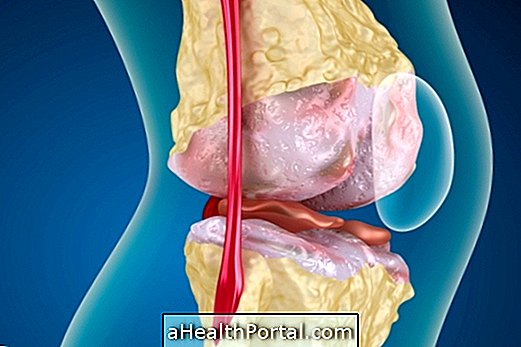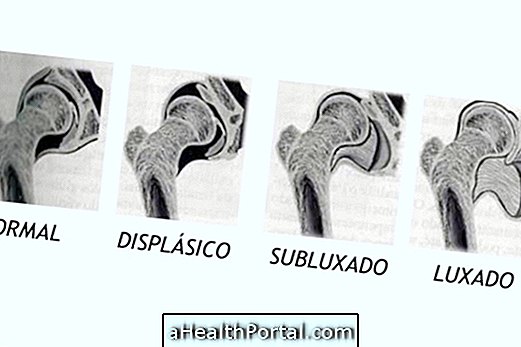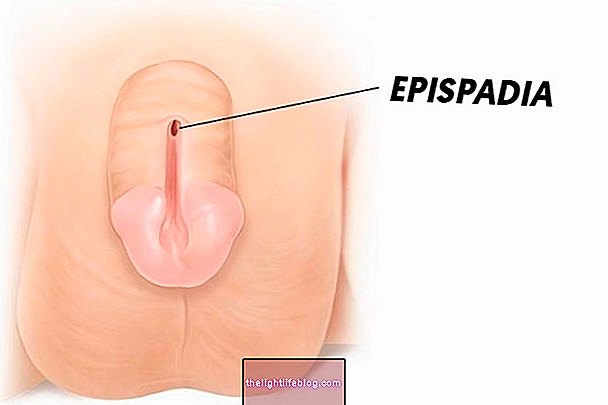Kienbock's disease is a condition where one of the small bones that are part of the wrist, known as lunate bone, does not receive the necessary amount of blood and therefore begins to deteriorate, causing constant pain in the wrist and difficulty to move or close the hand, for example.
This change can occur at any age, however, it is more common in the 20s and 40s and rarely affects both wrists at the same time.
Although there is no definitive cure for Kienbock's disease, some forms of treatment such as surgery or use of medicines can be used to relieve pressure on the bone and relieve symptoms.

How to relieve symptoms
Treatment for Kienbock's disease is done only to relieve the pain and difficulty of wrist movements, since increased circulation to the bone is very difficult to achieve. For this, there are several forms of treatment that must be evaluated by an orthopedist according to the degree of development of the disease and the intensity of the symptoms
Some of the most commonly used forms of treatment include:
1. Immobilization of the wrist
Many cases of Kienbock's disease can only improve with the immobilization of the wrist, because this way the bone is less overloaded, allowing the inflammation and the pressure in the place to diminish.
To immobilize the wrist, the doctor usually applies plaster on the hand, which should be kept for at least 2 or 3 weeks.
2. Anti-inflammatory medicines
The use of anti-inflammatories such as aspirin or ibuprofen is one of the first ways to treat this problem and usually works by relieving swelling of the tissue around the lunate bone, reducing pressure and relieving pain.
3. Physical therapy and stretching exercises
Performing some wrist stretching exercises can help relieve muscle pressure on the bones, relieving pain and allowing greater freedom of movement.
Usually, these exercises can be done during physiotherapy sessions, but can also be trained at home after the guidance of a physical therapist. Here are some stretches to the wrist that can help relieve pain.
4. Surgery
Surgical treatment is usually reserved for the more advanced cases of Kienbock's disease, when the symptoms do not improve with the forms of treatment indicated above.
The type of surgery varies according to the person and the specific problem, including:
- Repositioning of the wrist joint bones : When one of the bones of the arm is slightly shorter, the doctor can insert a small bone graft or remove a longer piece of bone, in order to balance the joint and reduce the pressure on the bone semilunar, relieving symptoms;
- Removal of the lunate bone : When the lunate bone is severely damaged, the orthopaedist may choose to completely remove the bone. However, in these cases it is also necessary to remove the two bones that are on the side, which eliminates the pain, but can reduce the range of movements of the wrist;
- Fist Bones Fusion : In some cases, a treatment option consists of attaching the wrist bones to form a single bone that receives blood from the other bones that were separated, relieving all symptoms.
In addition, surgery can also be used in one of the early stages of the disease to try to direct the blood circulation to the lunate bone. In this technique the doctor removes a piece of another bone that is receiving blood and sticks it to the lunate bone, allowing it also to be irrigated by blood. However, this technique is not possible in all cases and may not present satisfactory results in the postoperative period.
How to confirm the diagnosis
The pain caused by Kienbock's disease is often confused with carpal tunnel syndrome and therefore it is advisable to consult an orthopedist to confirm the diagnosis and initiate appropriate treatment.
To make the diagnosis, the doctor may order some diagnostic tests such as x-ray of the wrist and magnetic resonance imaging. These tests also facilitate the evaluation of the degree of evolution of the problem:
- Stage 1: At this stage the X-ray is usually normal, but magnetic resonance imaging indicates a lack of circulation to the bone;
- Stage 2: The lunate bone begins to get harder due to lack of circulation and therefore appears whiter than the remaining wrist bones on the X-ray;
- Stage 3: At this stage the bone begins to break and so the examinations can show the various pieces at the bone site and change the position of the bones that are around;
- Stage 4: is the most advanced phase where the pieces of the lunate bones cause decay of the bones around, causing arthritis on the wrist.
With the advancement of the disease, the pain in the wrist is becoming more intense, in addition to the movements become more difficult. In this way, knowing which stage allows the doctor to choose the most appropriate treatment option.























